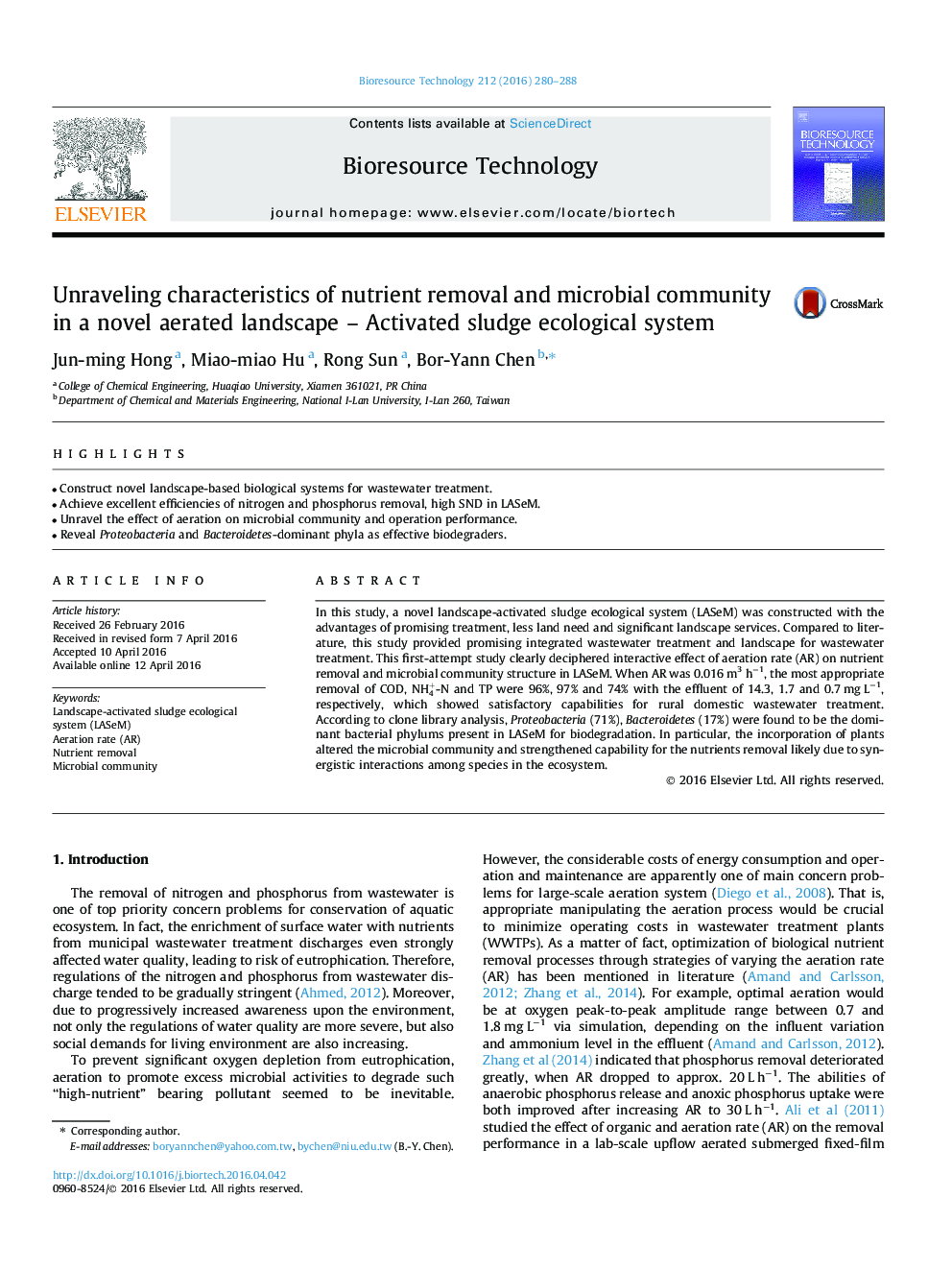| Article ID | Journal | Published Year | Pages | File Type |
|---|---|---|---|---|
| 7071285 | Bioresource Technology | 2016 | 9 Pages |
Abstract
In this study, a novel landscape-activated sludge ecological system (LASeM) was constructed with the advantages of promising treatment, less land need and significant landscape services. Compared to literature, this study provided promising integrated wastewater treatment and landscape for wastewater treatment. This first-attempt study clearly deciphered interactive effect of aeration rate (AR) on nutrient removal and microbial community structure in LASeM. When AR was 0.016 m3 hâ1, the most appropriate removal of COD, NH4+-N and TP were 96%, 97% and 74% with the effluent of 14.3, 1.7 and 0.7 mg Lâ1, respectively, which showed satisfactory capabilities for rural domestic wastewater treatment. According to clone library analysis, Proteobacteria (71%), Bacteroidetes (17%) were found to be the dominant bacterial phylums present in LASeM for biodegradation. In particular, the incorporation of plants altered the microbial community and strengthened capability for the nutrients removal likely due to synergistic interactions among species in the ecosystem.
Keywords
Related Topics
Physical Sciences and Engineering
Chemical Engineering
Process Chemistry and Technology
Authors
Jun-ming Hong, Miao-miao Hu, Rong Sun, Bor-Yann Chen,
